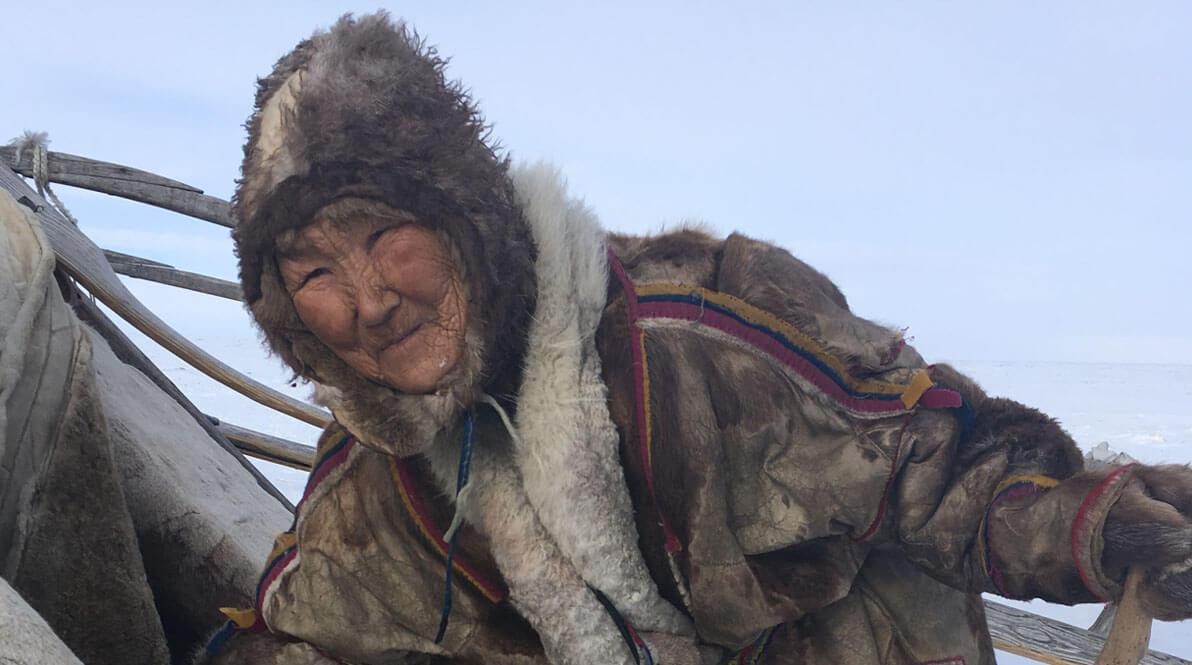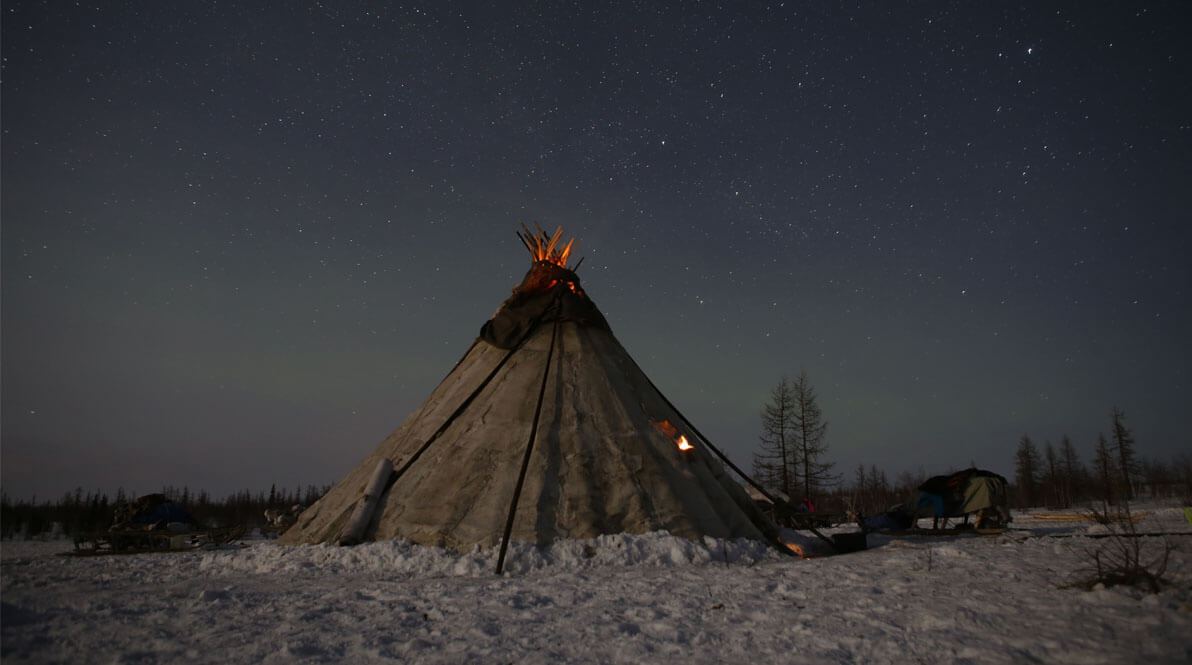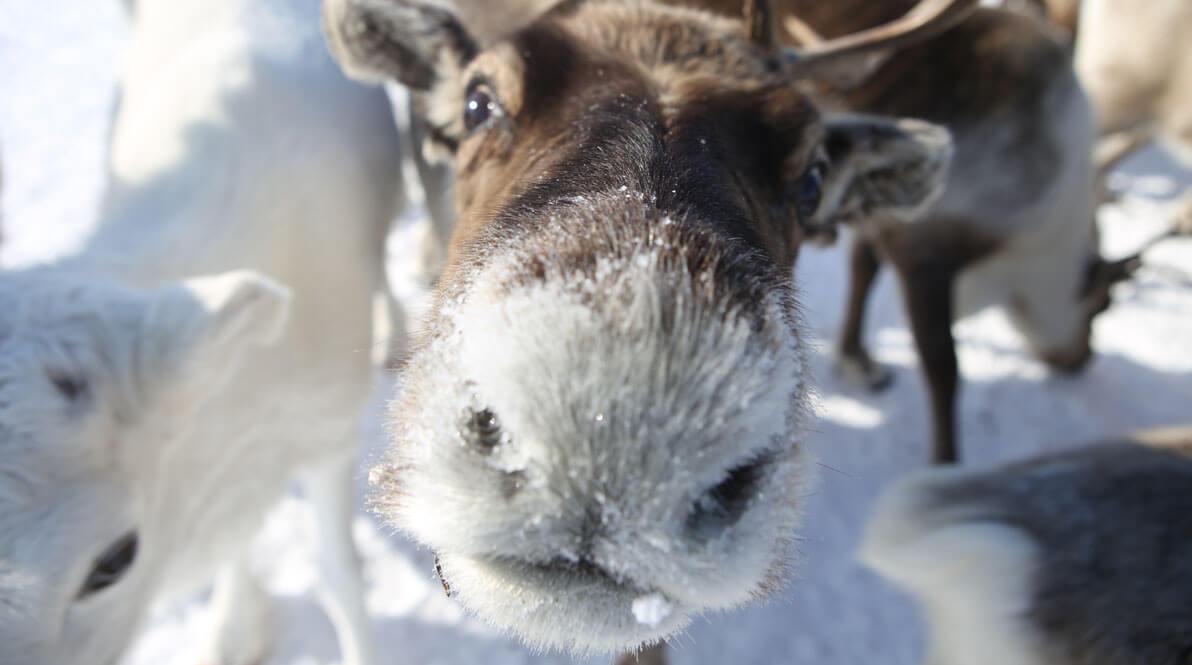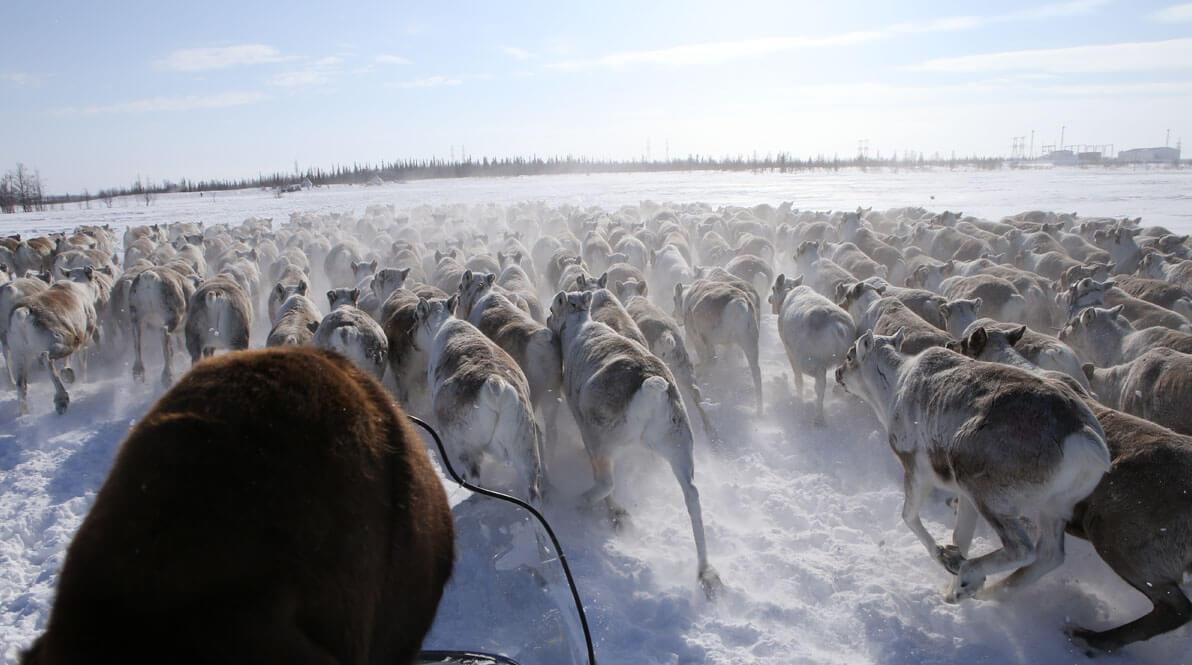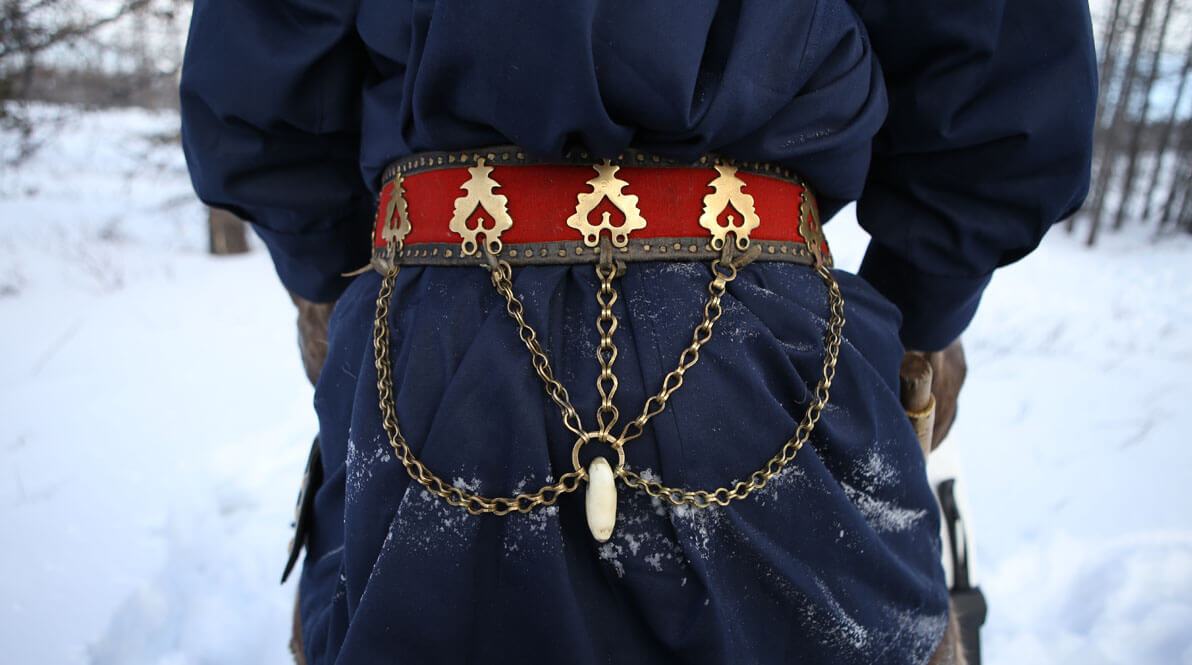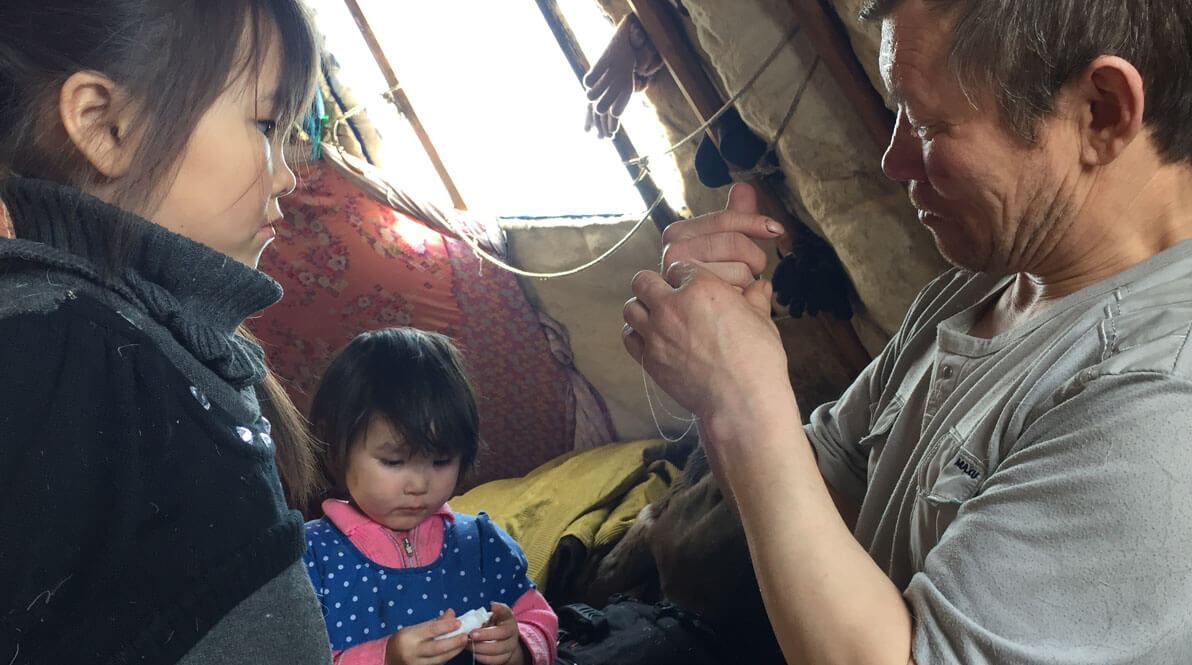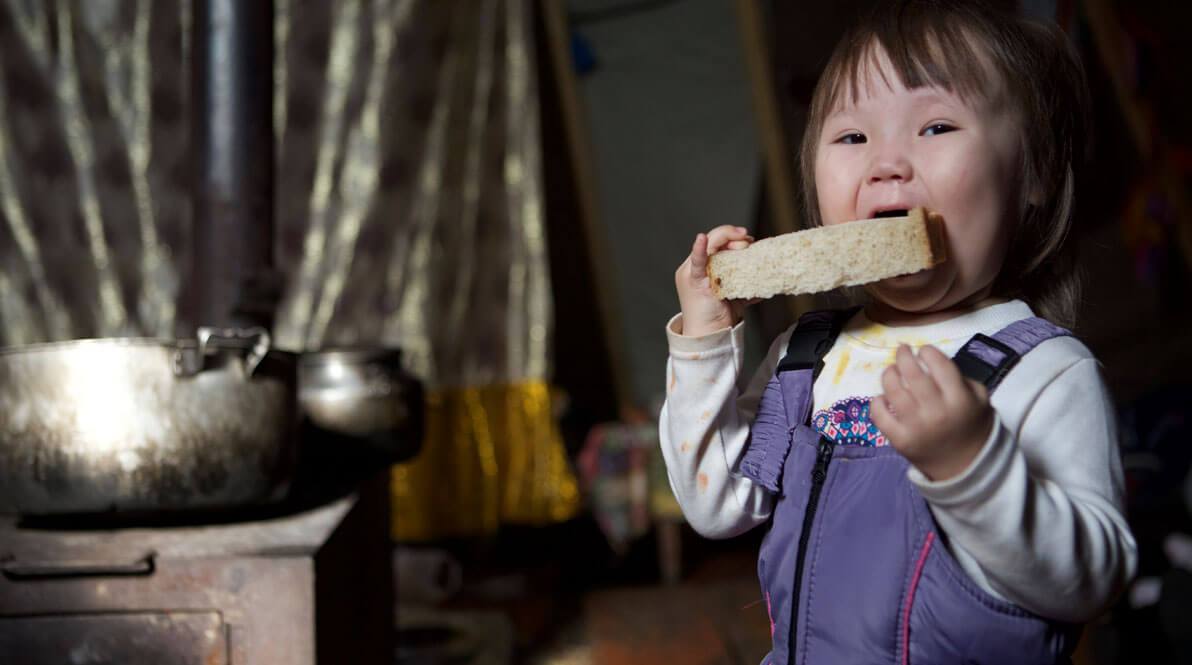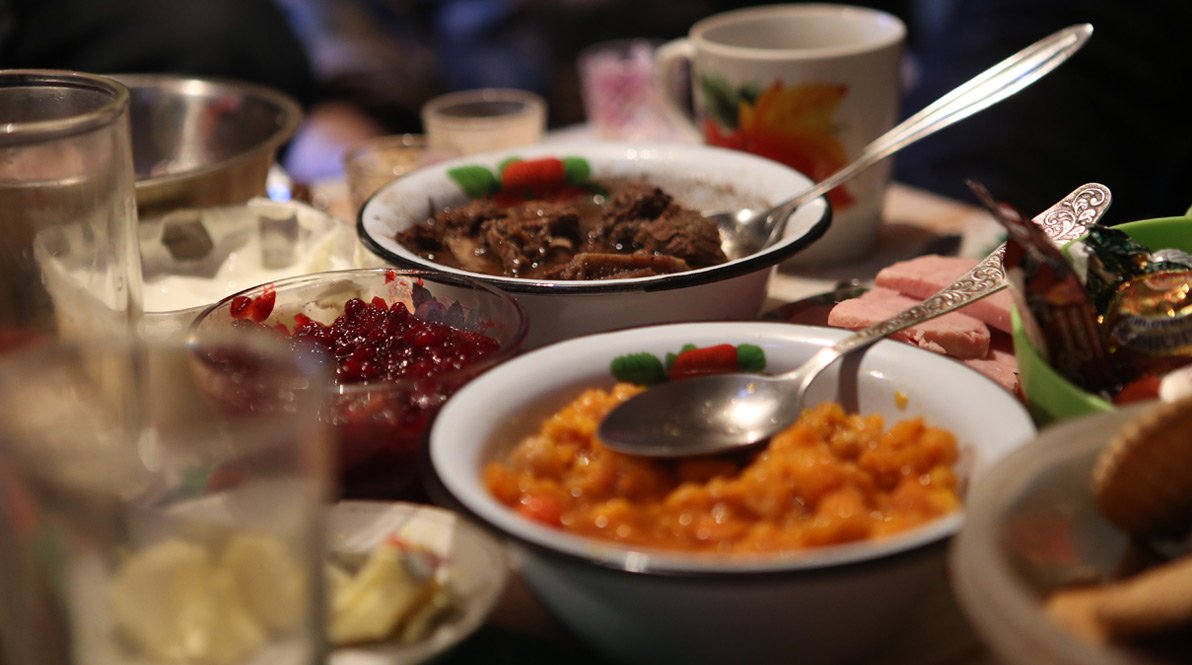Laptander
Family
Out in the tundra, piles of reindeer skulls mark the sacred places where many reindeer have been slaughtered and offered to the gods. The head is left as an offering, and the body is brought back to the chum for food.
Indoors, the chum is guarded by its protective amulet; a doll dressed in a woman’s coat. Another amulet doll, Ngiterma, is the guardian of the reindeer and the outdoors, and is dressed in a man’s coat. Each clan has its own holy sites. The clan elders are most versed in the ritual offerings but young people are still afraid of offending the gods.
![]() Siberia, N 66 53'00" E 69 42'20"
Siberia, N 66 53'00" E 69 42'20"
![]() 564 people
564 people

I don’t complain. It’s good enough that I’m alive.
Paraskovia recalls a childhood, nearly a century ago, of stormy weather in the Ural Mountains. She moved to the tundra when she married her late husband, Arti Puldovich Laptander. She remembers when World War II reached the Nenets and there were bombs exploding along the rivers. Her memories of the Soviet era include the suppression of the Nenets shamans, when much of their healing knowledge was forgotten.
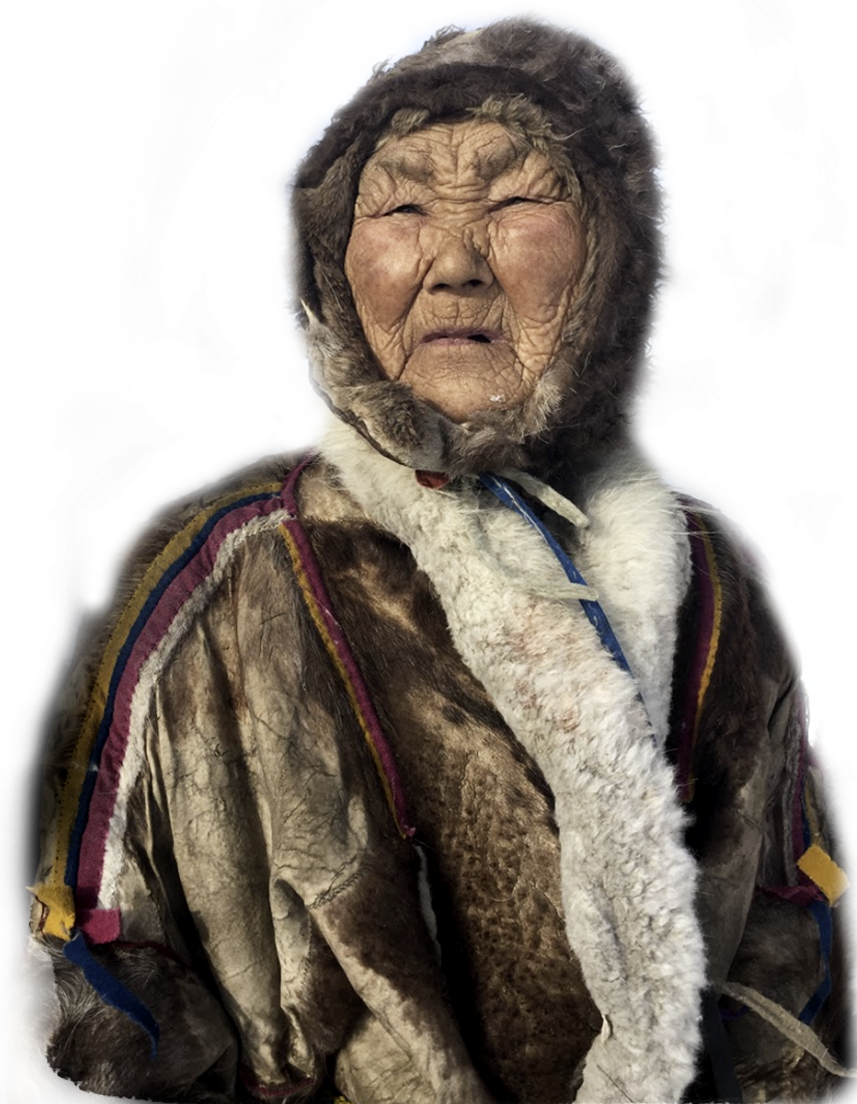
PARASKOVIA
97 Years Old | 4 Children
Paraskovia remembers key events in Nenets history, such as an anthrax outbreak among the reindeer 70 years ago (there was one more outbreak recently, in July 2016). Paraskovia’s lifelong role has been to take care of the chum: to keep it warm and prepare food while her husband fished, herded reindeer, and hunted polar fox.
THE LIGHT EYES OF THE NENETS
In Nenets tradition members of the same tribe or family line are not permitted to marry each other. Polina tells the story of the time two Laptanders did get married. Nge’na Laptander had light eyes, a typical trait of the Sew Ser tribe. As he was an orphan brought up by a Laptander family he was given special permission to marry a Laptander.
Khenuti
49 Years Old | 6 Children
we live in these harsh conditions of the arctic. it’s very important to be supportive, to help each other survive.
Khenuti tells the story of his great-uncle Pelia who began hunting seals at the age of 10. Pelia’s father had been arrested for his role in the mandelada independence movement. The family lost all their reindeer, and Pelia’s pregnant mother was in no position to hunt. It was left to 10-year old Pelia to provide for his mother and younger siblings. When Pelia returned to the chum at night after hunting, he was afraid that the family might have died from starvation during the day. Before going in, he’d listen for sounds from the family, and then breathe a sigh of relief when he heard them. His family survived thanks to him.
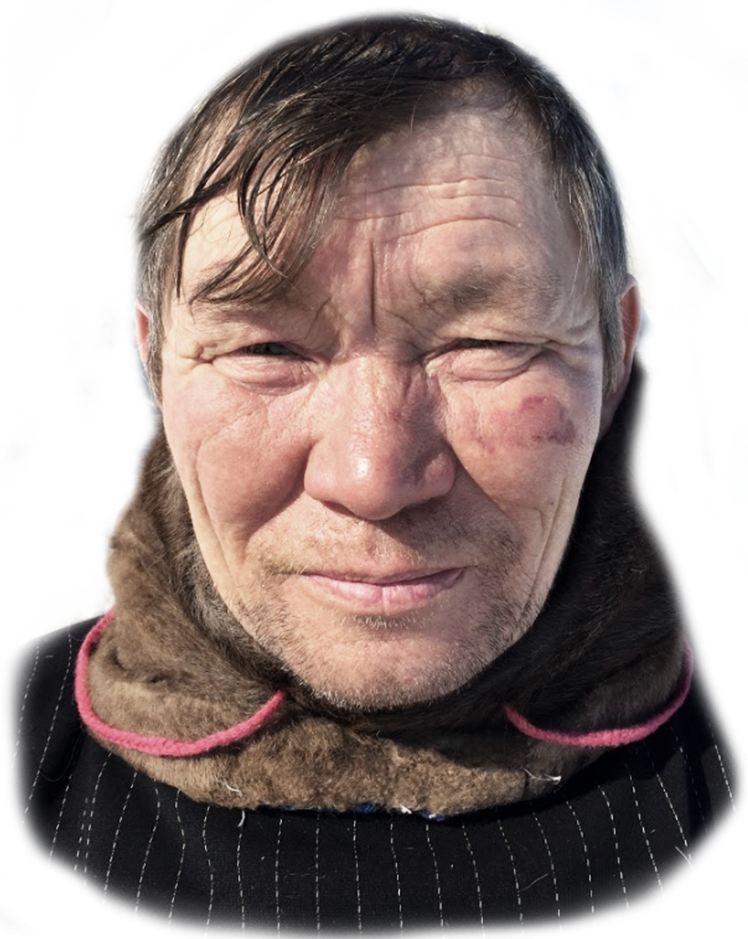
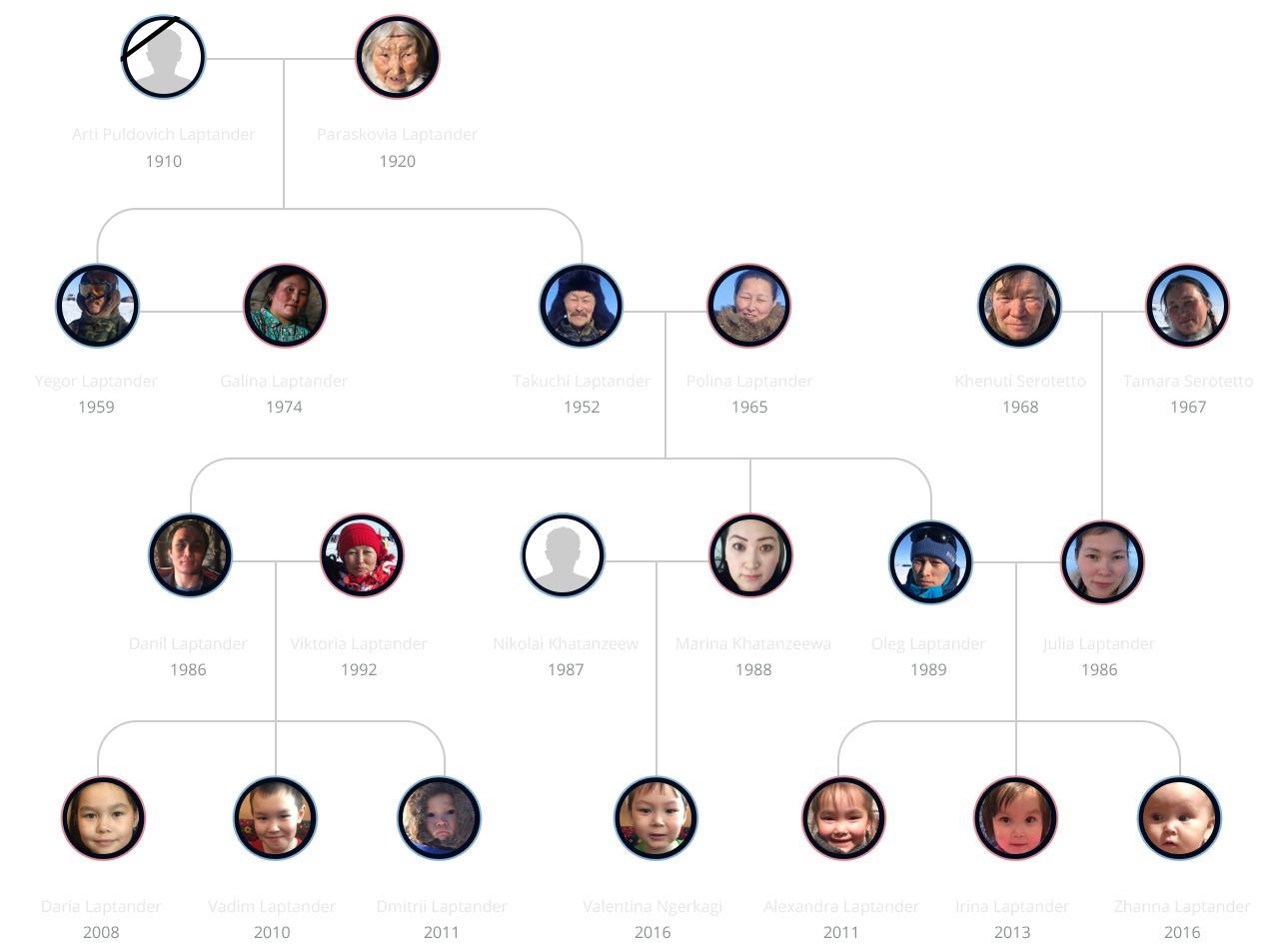
A song of family survival
This traditional Nenets song tells the story of a young man who was the sole survivor of his family, tasked with continuing the family line
I didn’t marry my wife, I stole her
When Maxim told his parents he had decided on the girl he wanted to marry they disagreed with his choice and refused to allow the marriage to go ahead. Determined to be with his perfect match, whom he had met many times out on the tundra, he stole her from her family’s chum. The couple did not get married but started living together. Their parents were angry at first but after a while they gave the couple some reindeer and a chum of their own.
Usually the marriage process is more formal. The groom chooses his bride, always from a different clan, and the families negotiate a deal. Nowadays much of the ritual is symbolic, with the doorway of the bride’s chum blocked and the groom expected to push his way in or climb up onto the chum to try to get in. Also the bride may be tied to a sledge which is pulled in circles around the tent and then pulled through a makeshift gate to represent the couple's next phase of their life. Tables for 20-40 family members are set up inside the chums of both the bride and groom’s families to eat, drink and celebrate the marriage.
Each family contributes half towards a chum for the young couple, who live in the husband’s family chum for the first couple of years as a sign of respect.
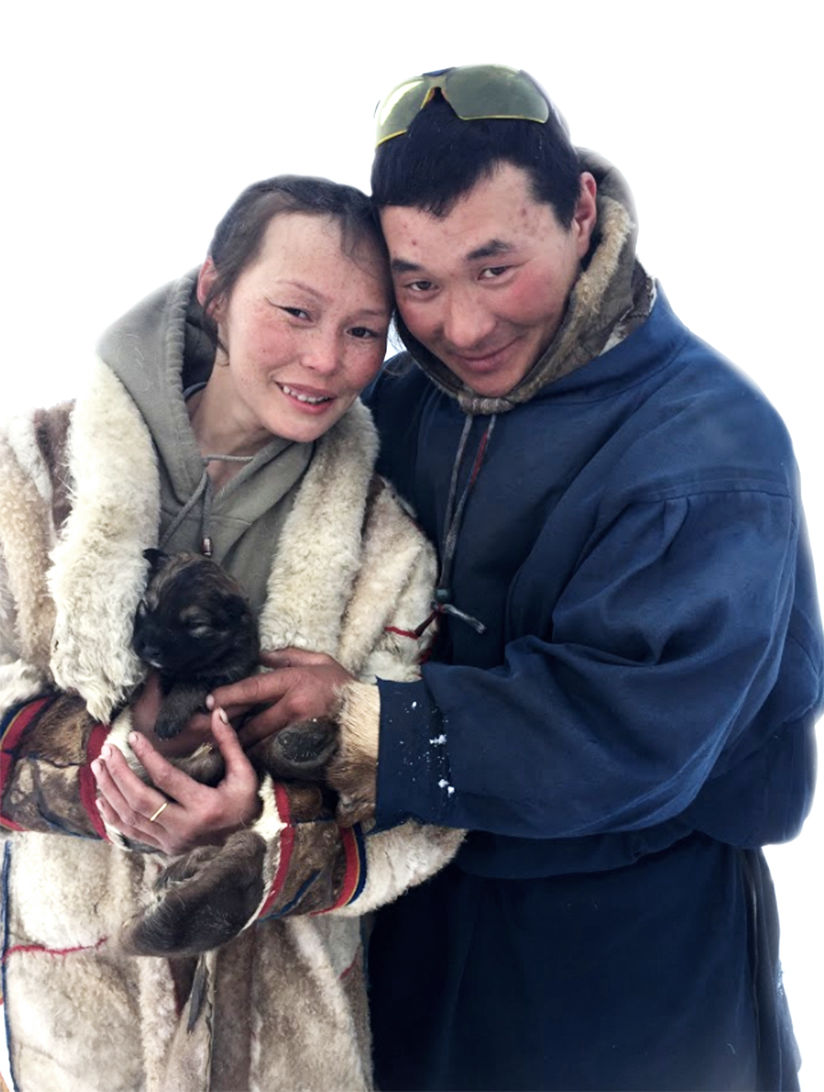
I couldn't live in one place. It would be boring to live without reindeer.
The Nenets' diet consists mainly of reindeer and fish — raw or cooked. Occasionally vegetables are bought from an outpost or chocolate is purchased from a store. Hot tea is served frequently from a small table in the center of the tent.
Women usually work inside the tent and around it, preparing food, bringing ice to make tea, keeping the tent in order and making clothes. There are strict rules about women staying on the women’s side of the tent. They are also not allowed to step over things that belong to the men, like their boots, as this is thought to bring bad luck.
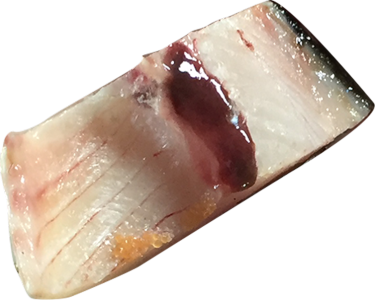
It was as if the entire sky was alight
The Nenets can see the Aurora Borealis (or Northern Lights) every night in winter when the sky is clear. Svetlana still goes out whenever they appear and stares at the magical blue-green glow in wonder. She likes to whisper and make hand movements so it looks to her like she is moving the sky. The best display of the Northern Lights she ever saw was in December 6 years ago, during the longest night of the year. According to Nenets tradition, after someone dies they find their way to the Northern Lights in the sky.
